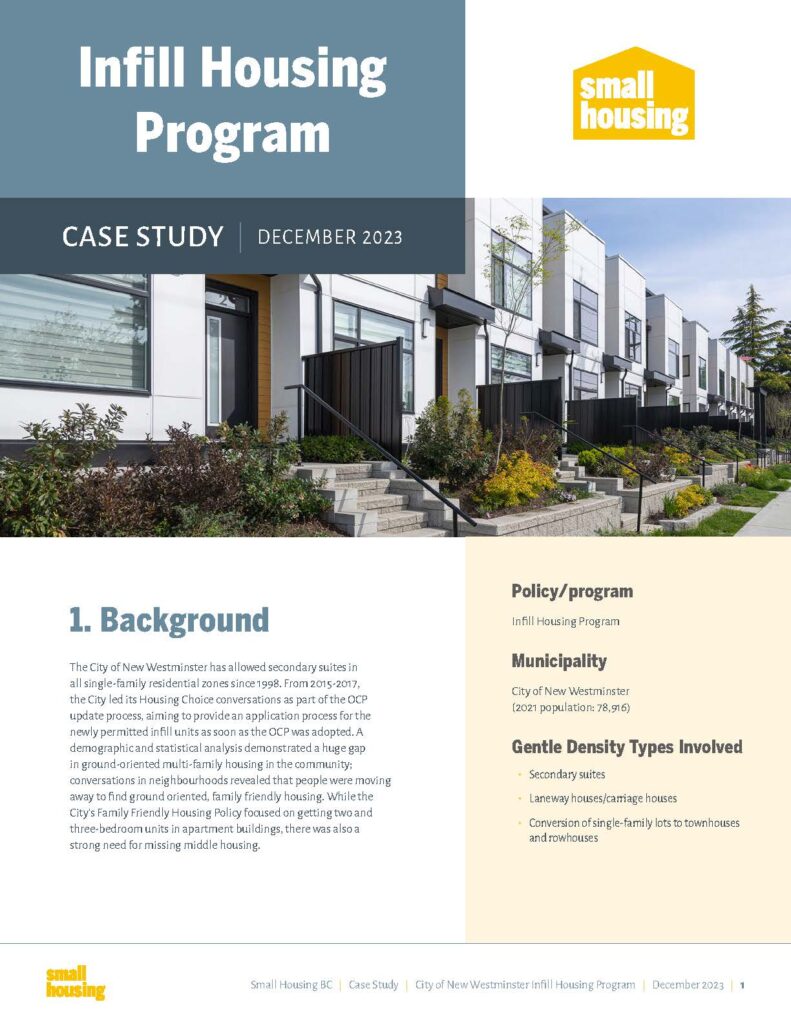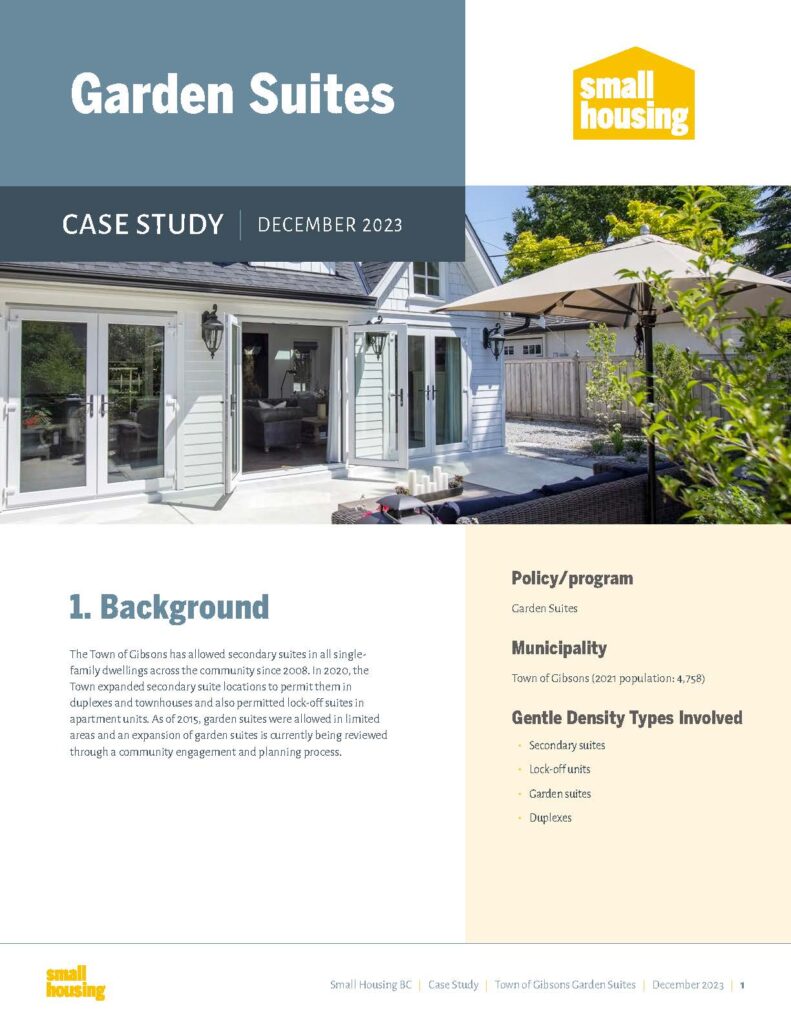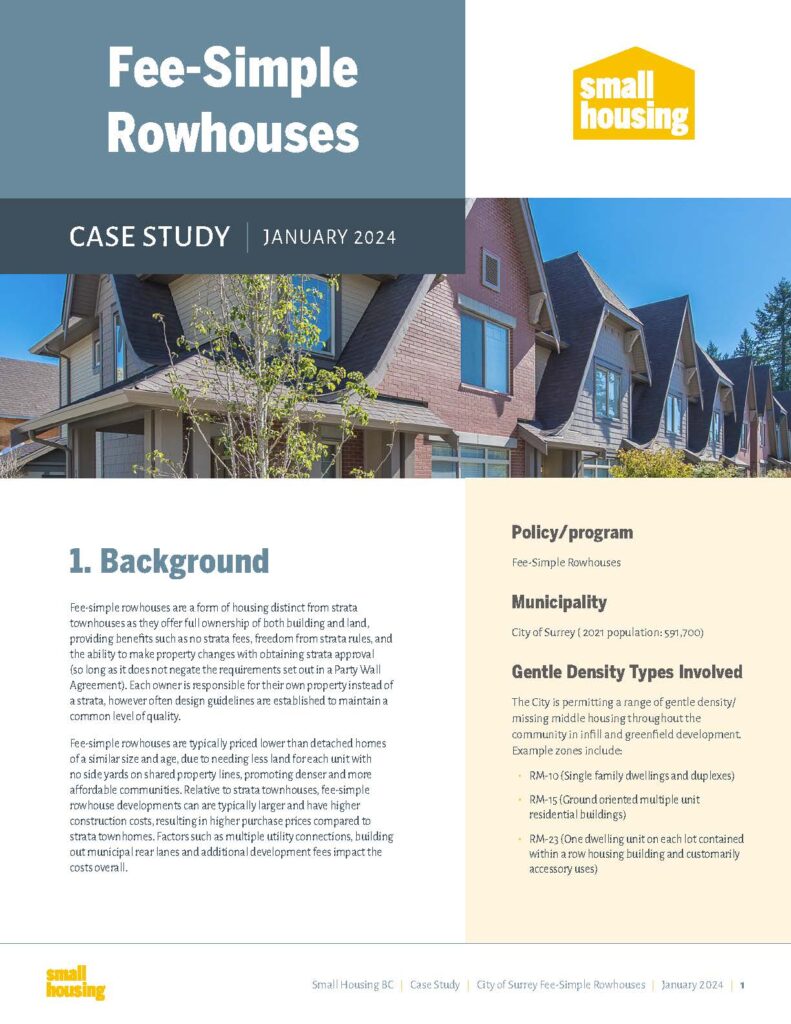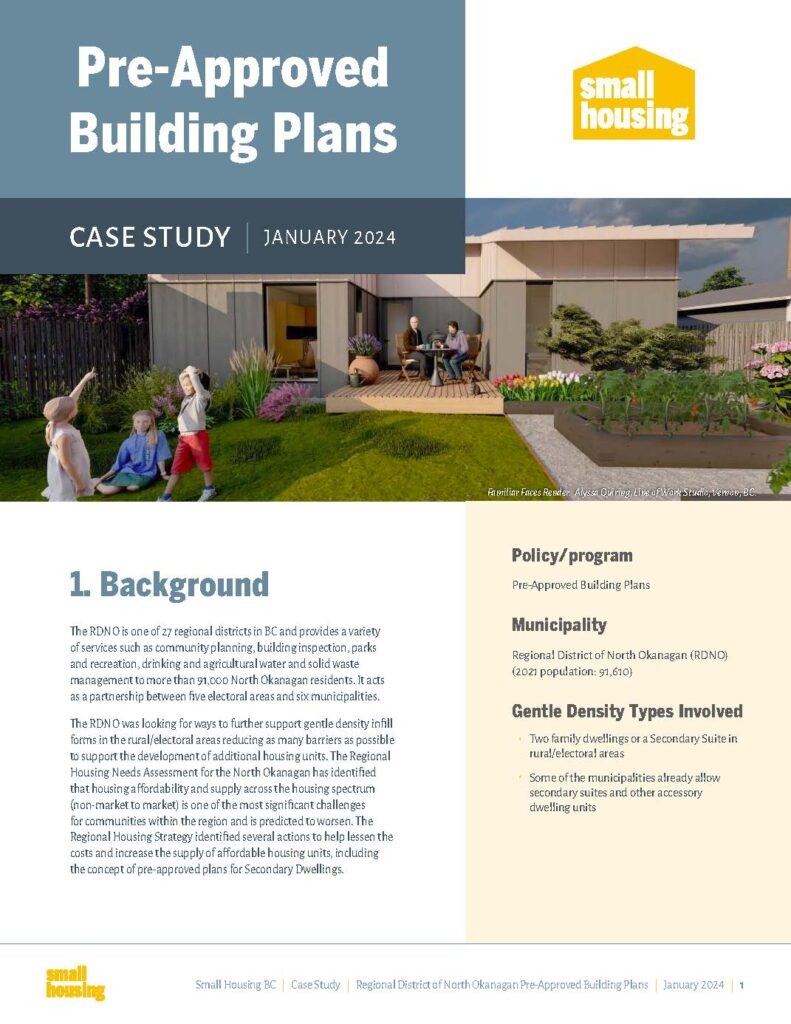
New Westminster’s Infill Housing Program: Expanding Ground-Oriented Housing Options
Since 1998, New Westminster has permitted secondary suites in all single-family zones. By 2017, demographic analysis revealed a major gap in ground-oriented, family-friendly housing — prompting community conversations and strong support for laneway houses, townhouses, and rowhouses.
While updating its Official Community Plan, the City launched Phase One of the Infill Housing Program, enabling laneway and carriage houses in most single-family zones. This case study explores the program’s origins, the key actors behind it, and lessons learned along the way.
Discover how targeted zoning changes can meet family housing needs without high-rises.
Keywords: New Westminster infill housing; gentle density housing; laneway houses; carriage houses; townhouses; rowhouses; family-friendly housing; small-scale multi-unit housing; missing middle housing; OCP housing policy








